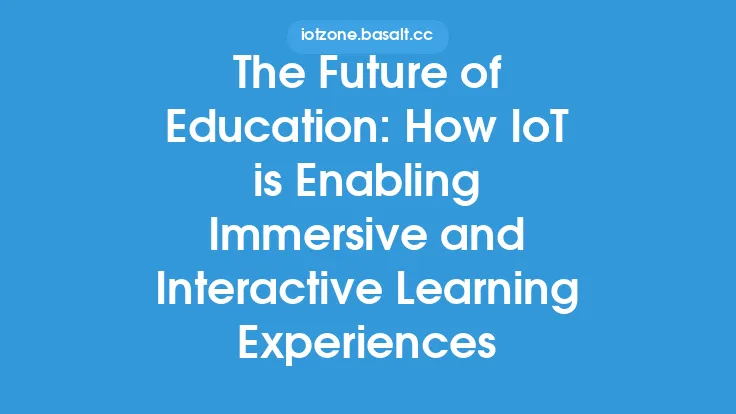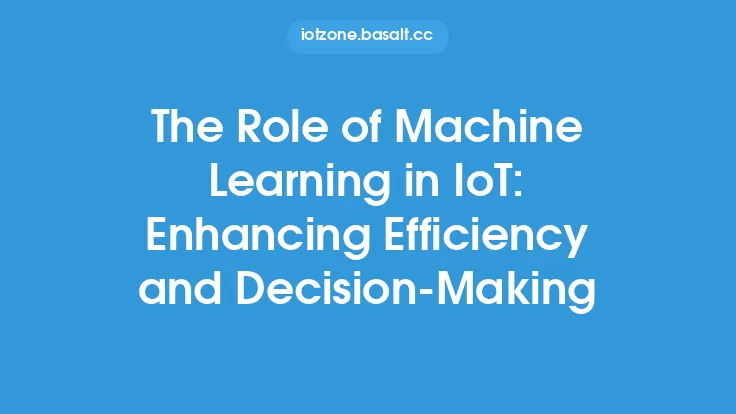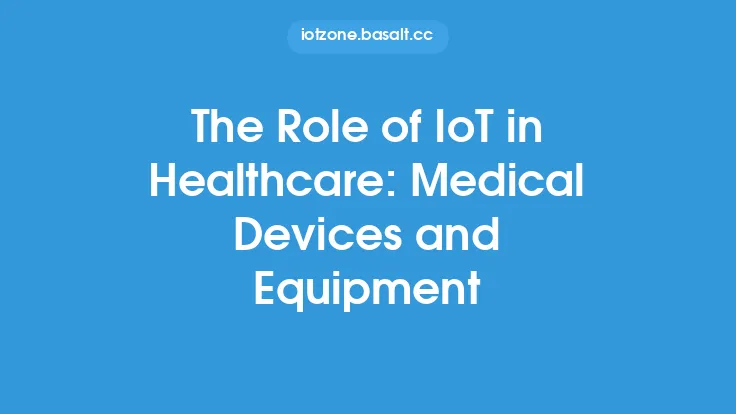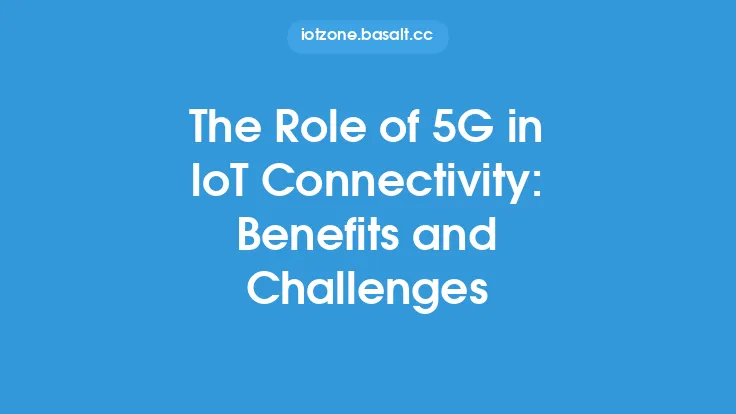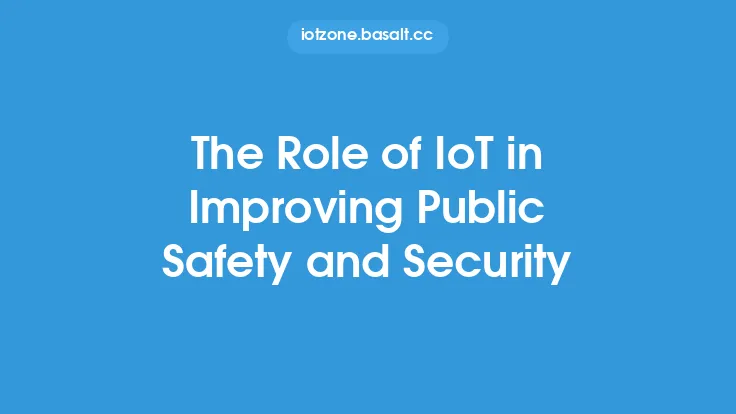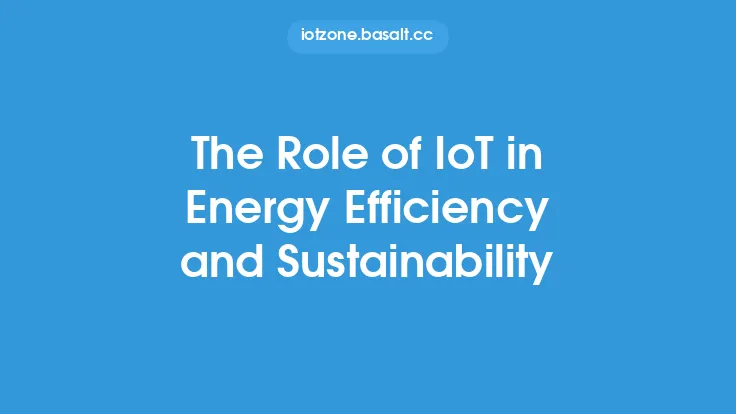The integration of Internet of Things (IoT) technology in educational settings has been gaining momentum in recent years, and for good reason. By leveraging IoT devices and sensors, educational institutions can create more accessible, personalized, and effective learning environments. In this article, we will delve into the role of IoT in education, exploring its potential to improve accessibility and personalization, and examining the technical aspects that make it possible.
Introduction to IoT in Education
IoT technology has the potential to revolutionize the way we learn and teach. By connecting physical devices and sensors to the internet, educators can create interactive and immersive learning experiences that cater to the needs of individual students. IoT devices can collect data on student behavior, preferences, and learning outcomes, allowing educators to tailor their teaching methods and materials to better meet the needs of their students. Additionally, IoT technology can help to create more accessible learning environments, enabling students with disabilities to participate fully in the learning process.
Improving Accessibility with IoT
One of the key benefits of IoT in education is its potential to improve accessibility. IoT devices can be used to create assistive technologies that help students with disabilities to navigate the learning environment more easily. For example, IoT-enabled wheelchairs can be designed to navigate through crowded classrooms and corridors, while IoT-enabled hearing aids can help students with hearing impairments to better understand audio instructions. Furthermore, IoT technology can be used to create virtual learning environments that allow students with mobility or health issues to participate in classes remotely. By leveraging IoT devices and sensors, educators can create more inclusive and accessible learning environments that cater to the needs of all students.
Personalization through IoT
IoT technology also has the potential to personalize the learning experience. By collecting data on student behavior and learning outcomes, educators can use IoT devices to create tailored learning plans that cater to the needs of individual students. For example, IoT-enabled learning management systems can be used to track student progress and identify areas where students need extra support. Additionally, IoT-enabled adaptive learning systems can be used to adjust the difficulty level of learning materials based on student performance. By leveraging IoT technology, educators can create more effective and personalized learning experiences that help students to achieve their full potential.
Technical Aspects of IoT in Education
From a technical perspective, IoT in education relies on a range of devices and sensors to collect and transmit data. These devices can include everything from simple temperature and humidity sensors to more complex devices such as cameras, microphones, and GPS trackers. The data collected by these devices is typically transmitted to a central server or cloud-based platform, where it can be analyzed and used to inform teaching practices. IoT protocols such as MQTT, CoAP, and HTTP are commonly used to facilitate communication between devices and the cloud, while data analytics platforms such as Hadoop and Spark are used to process and analyze the data. Additionally, IoT devices in educational settings often rely on wireless communication protocols such as Wi-Fi, Bluetooth, and Zigbee to transmit data.
IoT Devices and Sensors in Education
A range of IoT devices and sensors are being used in educational settings to improve accessibility and personalization. These devices can include wearable technologies such as smartwatches and fitness trackers, which can be used to track student physical activity and health. Additionally, IoT-enabled whiteboards and displays can be used to create interactive and immersive learning experiences, while IoT-enabled robots can be used to teach programming and robotics concepts. Other IoT devices and sensors used in education include environmental sensors, which can be used to monitor temperature, humidity, and air quality in classrooms, and security cameras, which can be used to monitor student safety and security.
Challenges and Limitations of IoT in Education
While IoT technology has the potential to revolutionize education, there are also several challenges and limitations that need to be addressed. One of the key challenges is ensuring the security and privacy of student data, which is typically collected and transmitted by IoT devices. Additionally, IoT devices can be vulnerable to hacking and other forms of cyber attack, which can compromise student safety and security. Furthermore, the integration of IoT technology in educational settings can be complex and time-consuming, requiring significant investment in infrastructure and training. Finally, there is also a need to ensure that IoT technology is used in a way that is equitable and accessible to all students, regardless of their background or socio-economic status.
Best Practices for Implementing IoT in Education
To ensure the successful implementation of IoT technology in educational settings, several best practices need to be followed. First, educators need to clearly define the goals and objectives of IoT implementation, and ensure that all stakeholders are on board. Additionally, educators need to ensure that IoT devices and sensors are properly secured and maintained, and that student data is protected and anonymized. Furthermore, educators need to provide training and support to teachers and students on the use of IoT devices and sensors, and ensure that IoT technology is integrated into the curriculum in a way that is pedagogically sound. Finally, educators need to continuously monitor and evaluate the effectiveness of IoT technology in improving accessibility and personalization, and make adjustments as needed.
Conclusion
In conclusion, IoT technology has the potential to revolutionize education by improving accessibility and personalization. By leveraging IoT devices and sensors, educators can create more inclusive and effective learning environments that cater to the needs of all students. While there are several challenges and limitations that need to be addressed, the benefits of IoT in education are clear. By following best practices and ensuring the secure and equitable implementation of IoT technology, educators can harness the power of IoT to improve student outcomes and create a more immersive and interactive learning experience. As IoT technology continues to evolve and improve, it is likely that we will see even more innovative applications of IoT in education, leading to better learning outcomes and a more personalized and accessible learning experience for all students.
